16 Hidden Gem Destinations In The USA You Need On Your Bucket List
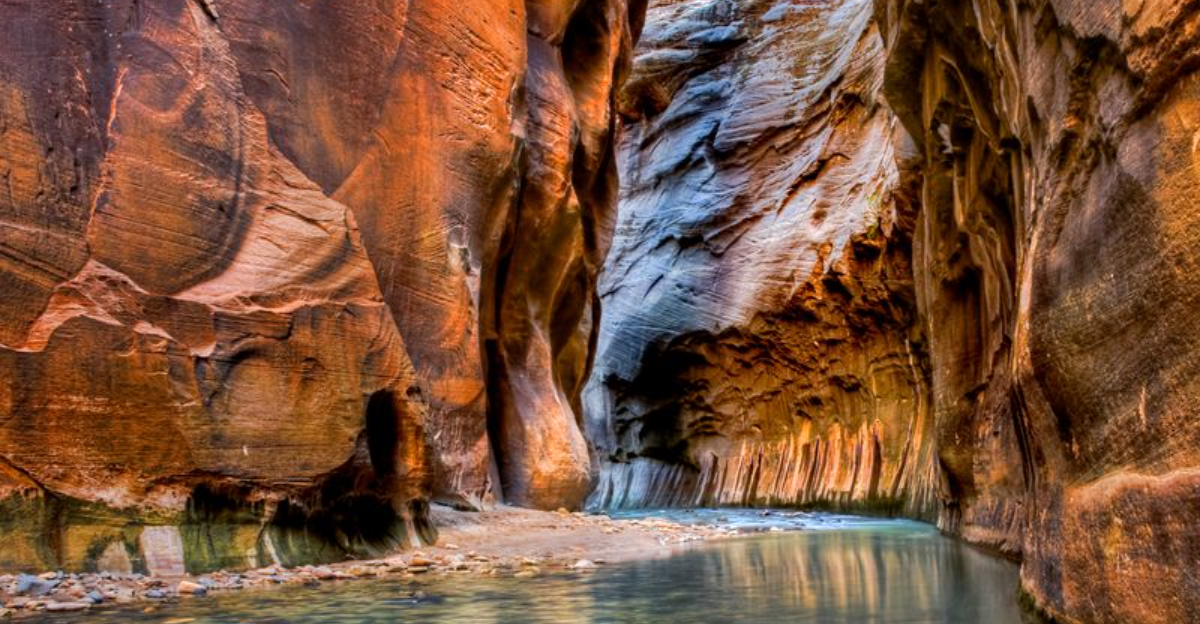
America’s most unforgettable places aren’t always the ones on postcards. While crowds swarm iconic spots like Times Square and the Grand Canyon, some of the country’s most magical destinations fly quietly under the radar.
Think charming small towns, breathtaking natural wonders, and history-soaked corners begging to be explored. These hidden gems offer all the beauty and adventure—without the lines, noise, or selfie sticks.
If you’re craving something different, something real, your next great escape might be closer than you ever imagined.
1. Antelope Canyon, Arizona
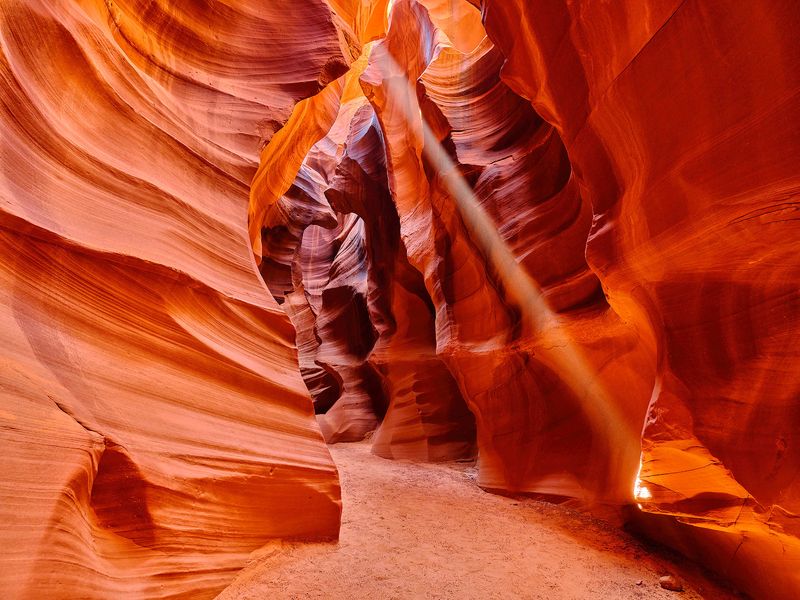
When sunlight filters through the narrow opening above, Antelope Canyon transforms into nature’s own cathedral. The smooth, flowing walls seem to dance with colors ranging from deep orange to soft purple.
Located on Navajo land near Page, Arizona, this slot canyon requires a guided tour to visit. Photography enthusiasts travel from around the world to capture the famous light beams that appear during midday hours.
The canyon formed over millions of years as flash floods carved through the sandstone. Walking through feels like stepping inside a work of art that nature sculpted just for you.
2. Hamilton Pool Preserve, Texas

Picture a swimming hole so beautiful it looks like something from a fairy tale. Hamilton Pool Preserve offers exactly that experience, complete with a stunning waterfall tumbling into crystal-clear water.
This natural wonder formed when an underground river collapsed thousands of years ago. The result is a grotto-like pool surrounded by limestone cliffs and hanging gardens of ferns and moss.
Swimming is allowed when bacteria levels are safe, but even without taking a dip, the scenery is breathtaking. Reservations are required during peak season, so plan ahead for this Texas treasure that feels worlds away from city life.
3. Dry Tortugas National Park, Florida
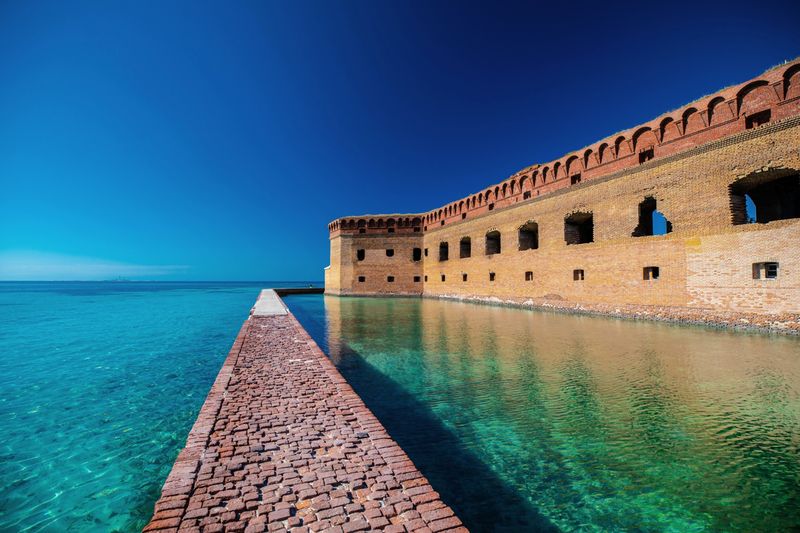
Seventy miles west of Key West lies one of America’s most remote national parks. Dry Tortugas feels like stepping into a pirate adventure, complete with a massive 19th-century fortress rising from the sea.
Fort Jefferson sits on Garden Key, accessible only by boat or seaplane. The journey itself becomes part of the adventure as you travel across pristine waters teeming with marine life.
Snorkeling here reveals some of the healthiest coral reefs in North America. Sea turtles, tropical fish, and countless bird species call this place home. Camping is available for those brave enough to spend the night in this isolated paradise.
4. Crater Lake National Park, Oregon
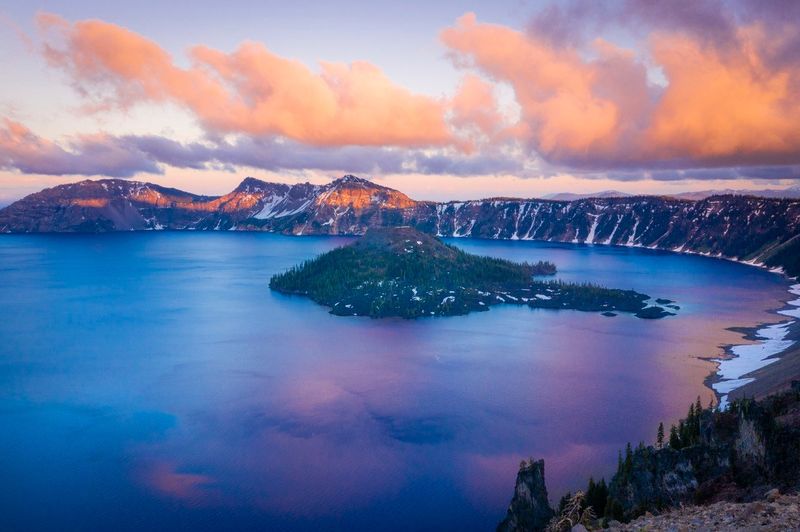
How deep is too deep for a lake? Crater Lake plunges nearly 2,000 feet down, making it one of the deepest lakes in the world. The water is so pure you can see 30 feet down on a clear day.
This natural wonder formed 7,700 years ago when Mount Mazama collapsed and created a massive caldera. Rain and snowmelt slowly filled the crater over thousands of years, creating the incredibly blue water you see today.
The 33-mile Rim Drive offers spectacular viewpoints, but winter snow often closes sections of the road. Summer visits provide the best access to hiking trails and boat tours that take you down to the lake’s surface.
5. Apostle Islands, Wisconsin
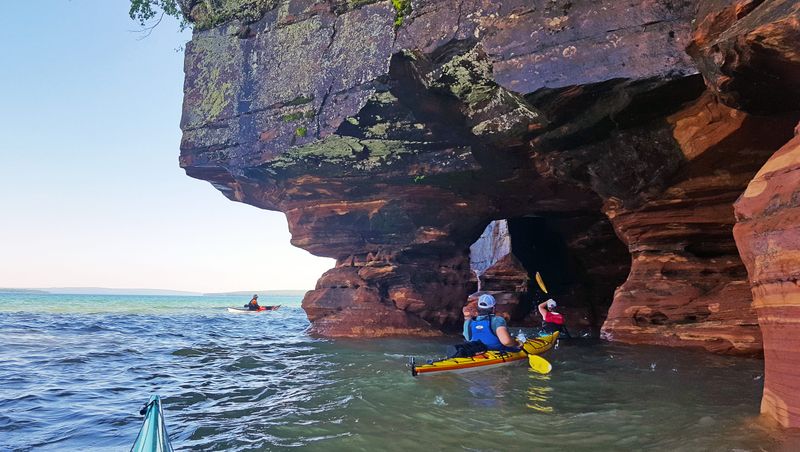
Lake Superior holds secrets that few people ever discover. The Apostle Islands offer 21 islands scattered across pristine waters, each with its own personality and hidden treasures waiting to explore.
Sea caves carved into the sandstone cliffs provide incredible kayaking adventures during summer months. When winter arrives, these same caves transform into magical ice cathedrals that you can walk through on foot.
Camping on the islands gives you a true wilderness experience. Historic lighthouses dot several islands, telling stories of Great Lakes shipping from bygone eras. The night sky here rivals any place in the country for stargazing opportunities.
6. Valley of the Gods, Utah
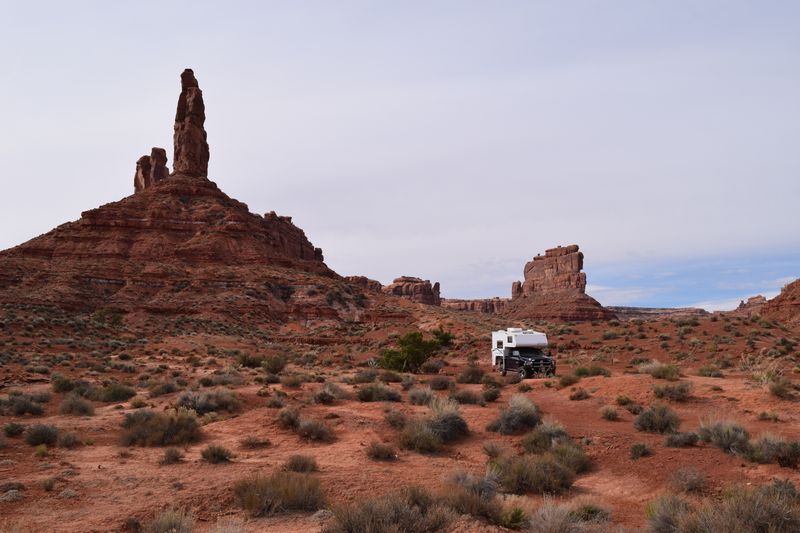
Driving through Valley of the Gods feels like entering a western movie set. Towering red rock formations rise from the desert floor like ancient monuments, each one uniquely shaped by millions of years of erosion.
This 17-mile dirt road connects Highway 261 to Highway 163, offering one of the most scenic drives in America. The route is suitable for most vehicles, though high clearance helps during wet conditions.
Unlike nearby Monument Valley, you won’t find crowds or entrance fees here. The solitude allows you to truly connect with the landscape and understand why Native Americans considered this land sacred for thousands of years.
7. Pictured Rocks National Lakeshore, Michigan
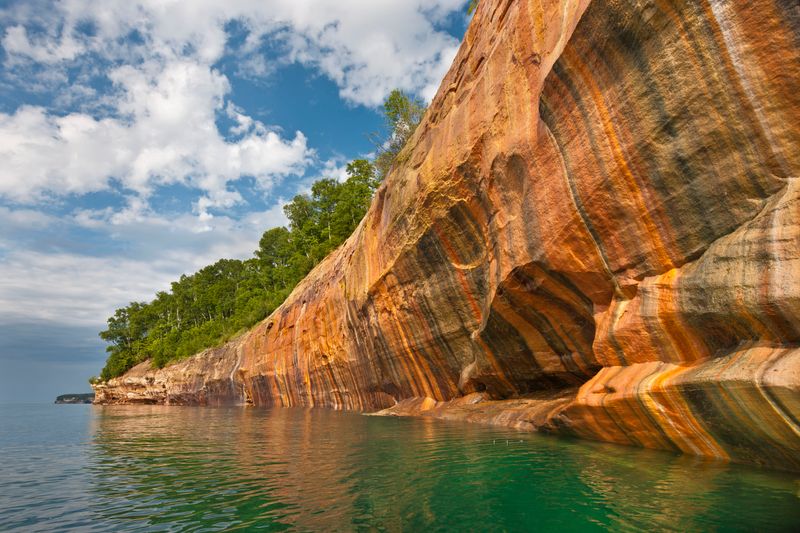
Michigan’s Upper Peninsula hides one of the most colorful coastlines in America. Pictured Rocks earned its name from the stunning mineral stains that paint the sandstone cliffs in shades of red, orange, yellow, and green.
Kayaking offers the best way to see the famous arches, caves, and waterfalls that make this shoreline so special. The water stays cold even in summer, but the scenery more than makes up for any chilly conditions.
Hiking trails along the cliff tops provide different perspectives of Lake Superior’s endless horizon. Chapel Rock, balanced precariously on its own pillar, has become one of the most photographed spots in the Midwest. Fall colors here rival anything New England has to offer.
8. Thor’s Well, Oregon
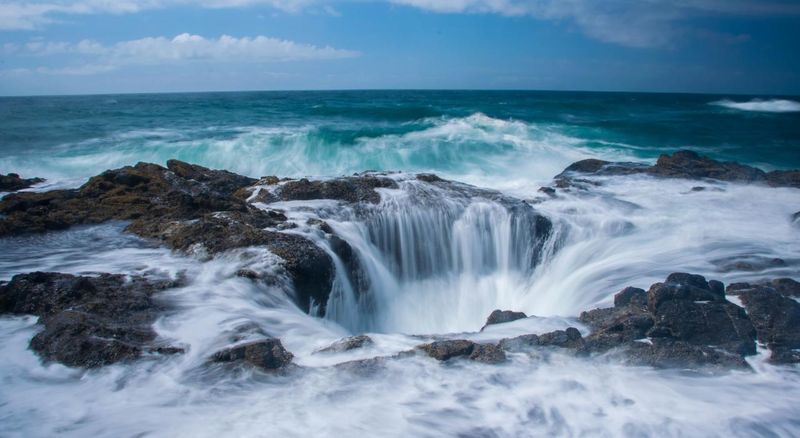
They call it the Gate to Hell, but Thor’s Well looks more like nature’s own drain plug. This circular hole in the rocky coastline appears to swallow the Pacific Ocean during high tide, creating one of the most mesmerizing sights on the Oregon coast.
Timing your visit perfectly makes all the difference. Arrive one hour before high tide to see the well fill and drain in dramatic fashion. The surrounding tide pools teem with colorful sea anemones and starfish.
Cape Perpetua Scenic Area provides easy access to this geological wonder. The short walk from the parking area takes you through coastal forest before revealing the dramatic coastline. Bring a camera and prepare to be amazed by nature’s power.
9. Badlands National Park, South Dakota
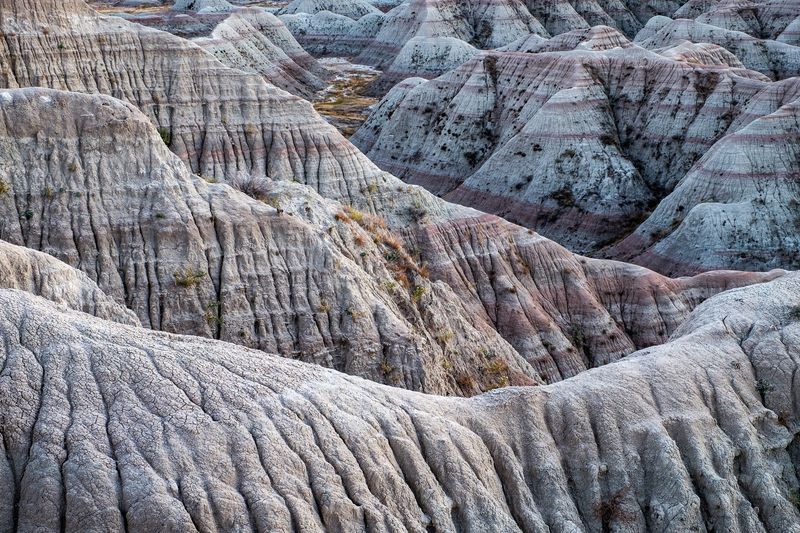
Time becomes visible in the Badlands, where 75 million years of Earth’s history lies exposed in colorful rock layers. These eroded formations create an otherworldly landscape that changes dramatically with the light throughout the day.
Fossil hunting is allowed in certain areas, and you might discover ancient sea creatures or early mammals. The park contains one of the world’s richest fossil beds from the Oligocene Epoch.
Wildlife thrives here despite the harsh conditions. Bighorn sheep navigate the steep cliffs while prairie dogs create underground cities in the grasslands. The night sky offers incredible stargazing opportunities far from any city lights. Summer temperatures can be extreme, so plan accordingly.
10. Mammoth Cave National Park, Kentucky
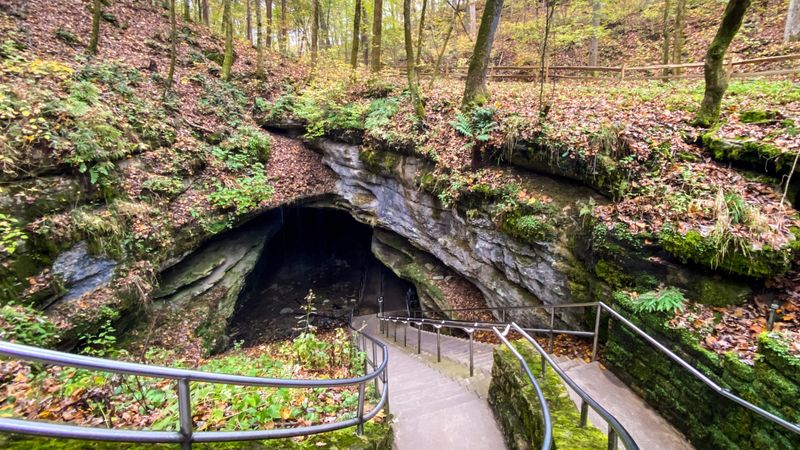
Beneath Kentucky’s rolling hills lies the world’s longest known cave system. Mammoth Cave stretches for over 400 mapped miles, with new passages still being discovered by explorers today.
Tours range from easy walks suitable for families to challenging crawls through tight spaces. The Historic Tour takes you through passages used by Native Americans over 4,000 years ago, while the Wild Cave Tour offers a true spelunking adventure.
The cave maintains a constant 54-degree temperature year-round, making it a perfect escape from summer heat or winter cold. Underground rivers and enormous chambers create an alien world that exists just beneath our feet. Above ground, the park protects one of Kentucky’s largest remaining forests.
11. Mono Lake, California
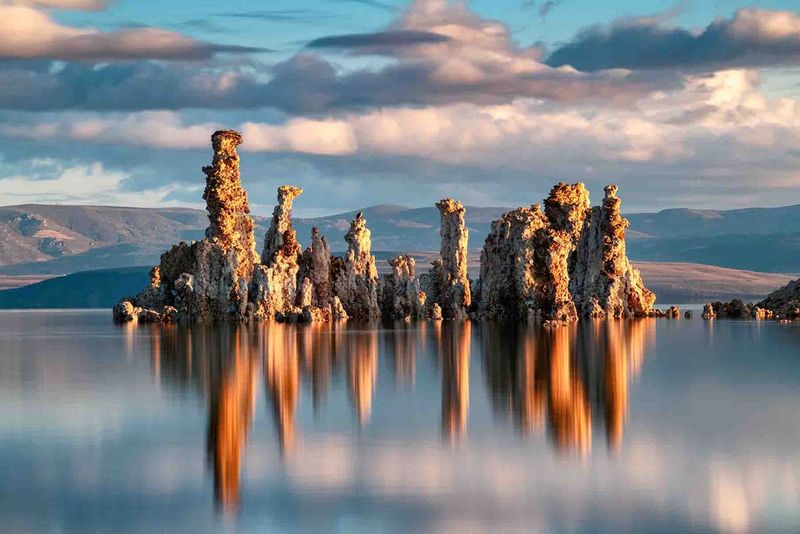
Ancient beyond imagination, Mono Lake has existed for over one million years. This saline lake creates conditions so unique that tiny brine shrimp and alkali flies form the base of an ecosystem found nowhere else on Earth.
The famous tufa towers formed underwater when calcium-rich springs mixed with the lake’s alkaline water. As water levels dropped over time, these limestone sculptures became visible, creating an almost alien landscape.
Millions of migratory birds depend on Mono Lake as a crucial stopping point. The lake’s high salt content makes it impossible for fish to survive, but the abundance of brine shrimp provides perfect food for visiting birds. Sunrise and sunset here create unforgettable photographic opportunities.
12. Havasu Falls, Arizona
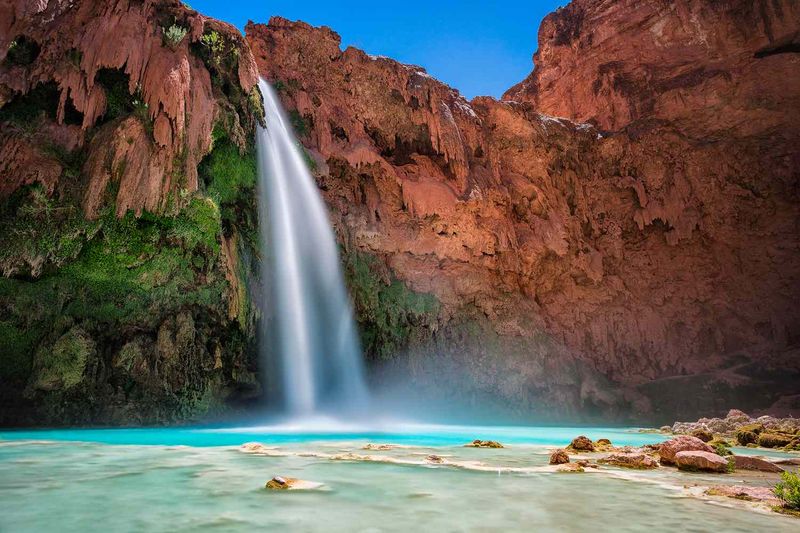
Hidden deep in the Grand Canyon lies a waterfall so beautiful it seems impossible. Havasu Falls plunges 100 feet into pools of the most incredible turquoise water you’ve ever seen, created by high mineral content in the spring water.
Reaching this paradise requires dedication. The hike to Havasu Falls covers 8 miles through desert terrain, and camping is mandatory since it’s too far for a day trip.
The Havasupai Tribe has protected this sacred place for over 800 years. Reservations are required and often sell out within hours of becoming available. The effort to get here makes the experience even more rewarding when you finally dip your feet in those magical blue-green waters.
13. Maroon Bells, Colorado

Colorado’s most photographed peaks rise majestically above Maroon Lake like something from a postcard. These twin summits, known as the Maroon Bells, create perfect reflections in the crystal-clear alpine water below.
Fall transforms this area into a golden wonderland when aspen trees change color. The contrast between bright yellow leaves and red sandstone peaks creates one of nature’s most stunning color combinations.
Access requires advance shuttle reservations during peak season to protect this fragile alpine environment. The short walk from the shuttle stop to the lake makes this beauty accessible to visitors of all ages. Early morning visits offer the calmest water for perfect reflections and fewer crowds to share the experience.
14. White Sands National Park, New Mexico
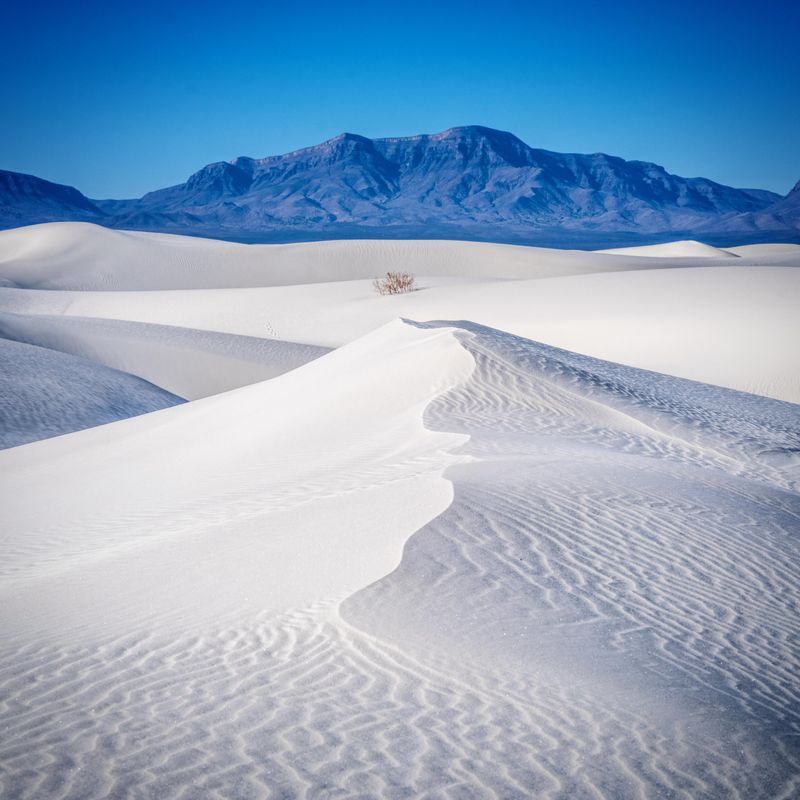
Imagine a desert made entirely of pure white sand that stays cool even under the blazing New Mexico sun. White Sands contains the world’s largest gypsum dune field, creating an otherworldly landscape that looks like fresh snow in the desert.
The gypsum crystals never get hot enough to burn your feet, making barefoot exploration possible even on summer days. Sand sledding down the dunes provides endless fun for visitors of all ages.
Plants and animals have adapted in amazing ways to survive in this white world. Some creatures have evolved to be completely white for camouflage. Full moon nights offer ranger-led tours where the dunes glow with an ethereal light that transforms the entire landscape into something magical.
15. Devil’s Tower, Wyoming
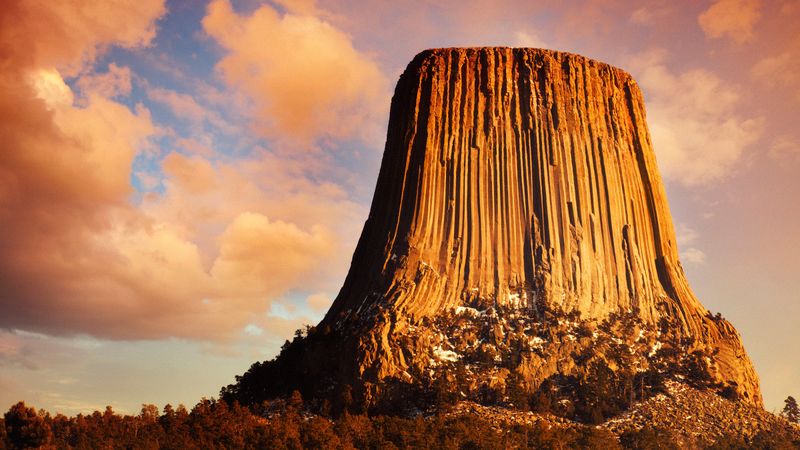
Rising 867 feet from the Wyoming plains, Devil’s Tower looks like something from another planet. This volcanic neck formed 50 million years ago when magma cooled underground, creating the distinctive columns we see today.
Rock climbers from around the world come to test their skills on these vertical walls. Over 200 climbing routes of varying difficulty make this a premier destination for the sport.
Native American tribes consider this formation sacred and have many legends about its creation. The most famous tells of giant bear claws scratching the rock as it tried to reach children who had climbed to safety. Prairie dog towns surround the base, and the area offers excellent wildlife viewing opportunities throughout the year.
16. Zion Narrows, Utah

Walking through the Zion Narrows feels like entering a natural cathedral where walls tower 1,000 feet overhead and sometimes narrow to just 20 feet wide. The Virgin River carved this incredible slot canyon over millions of years.
This unique hike requires walking in the river for much of the journey. The water can be knee-deep or higher, and the current adds an extra challenge to navigating the rocky riverbed.
Special gear including canyon shoes and walking sticks helps ensure safety on the slippery rocks. Flash flood danger means checking weather conditions is crucial before entering. The play of light and shadow on the canyon walls creates constantly changing patterns that photographers dream about capturing.
